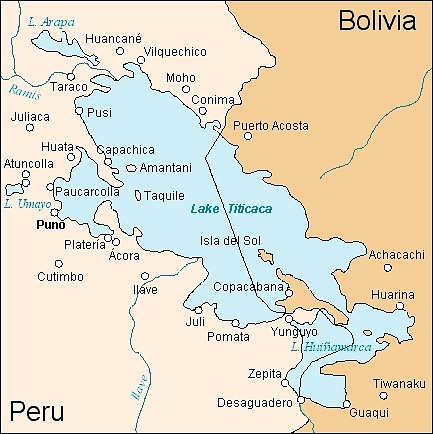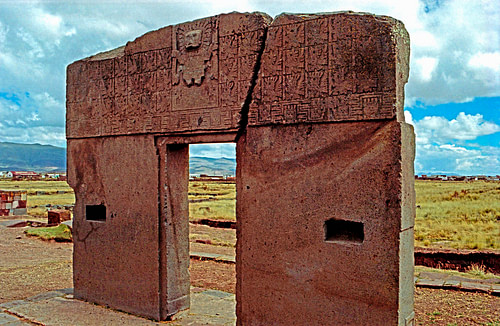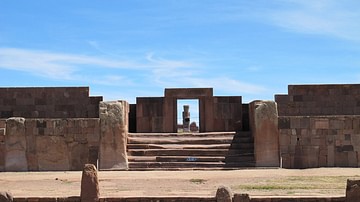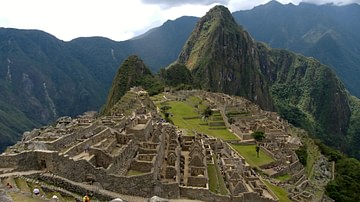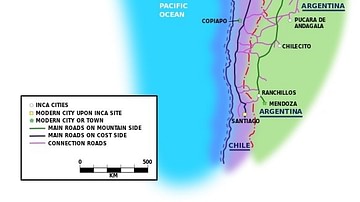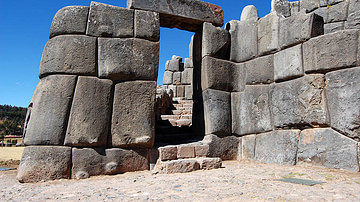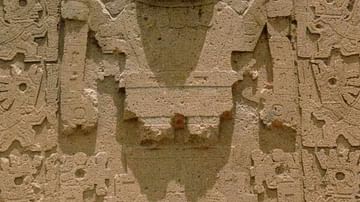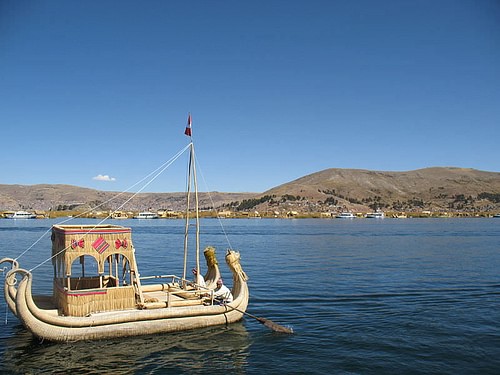
Lake Titicaca is located between Bolivia and Peru and, at an altitude of 3,800 metres (12,500 feet), it is the world's highest navigable lake. The tundra plain known as the altiplano stretches to the south and was the location of Tiwanaku, capital of one of the most important Andean cultures during the first millennium CE. The lake was also considered to be the centre of the cosmos and origin of the sun, moon, stars, and humankind and, consequently, was one of the most sacred sites for the Inca civilization.
In Mythology
Lake Titicaca was long considered the origin and centre of the cosmos by the local populace and then also the later Incas. In their creation myths, Viracocha or Wiraqocha Pachayachachic, the creator god, populated the world with a race of stone giants. These proved unruly and so Viracocha made humans instead but, unimpressed with their greed and hubris, the god sent a great flood upon the earth. All but three humans were destroyed but, from these survivors, the human race once again sprang forth. The world was still in darkness, though, so Viracocha made the sun, moon and stars from islands in the centre of Lake Titicaca. In an interesting aside, the sun became jealous of the brightness of the moon and threw ashes in her face so that now her light was dimmed.
Early Settlement
The area around the lake was first settled in the mid-2nd millennium BCE with pottery finds at Chiripa on the southern shore being amongst the oldest artefacts. As with other late cultures, the llama, vucuna, and alpaca were a source of wool, transport, and, if necessary, food. The lake provided fish and totora reeds which were used to make boats, roofs and mats (a tradition which continues today). Potatoes, quinoa, and oca were also cultivated (corn could not be grown at the altitude of the altiplano) and metals such as gold, copper, and tin were extracted from the nearby mountains. Limitations on development, though, included the cold climate and absence of trees; factors which would eventually necessitate population movement to the warmer, more fertile, south.
Pucará & Tiwanaku
The first important and independent culture was to the northwest of the lake at Pucará (400 BCE - 100 CE) but very little besides red sandstone foundation slabs and some well-dressed wall stones survive of the settlement. Stone sculpture and pottery vessels have been excavated, and the latter display painted and incised decoration of geometric shapes, felines, and distinctive curved human forms, typically painted in red, brown, or cream.
Even more significant was the site of Tiwanaku (or Tiahuanaco) which flourished from 200 BCE to 1000 CE on the southern shores of the lake and which became the capital of an extensive empire. The two cultures were parallel but seemingly independent, although there are common features such as sunken courts and some similarities in their respective artistic styles. The culture at Tiwanaku may also have been influenced by the nearby site of Chiripa, which predates it.
Monumental architecture first appeared at Tiwanaku from 200 CE with large walled courts, ceremonial pyramids, massive stone statues, and the celebrated Gateway of the Sun. Raised fields reclaimed marshy land from the shoreline and irrigation channels brought water from the lake which increased agricultural production. A moat was also created to surround the sacred precinct on three sides with the fourth side being the lake shore itself. The city stretched over 10 square kilometres and the peak population at Tiwanaku could have been as high as 70,000.
The reason for the collapse of Tiwanaku is unclear and may have been due to a combination of over-extension of the empire, rebellion, and climate change. A series of droughts at the turn of the millennium caused the level of the lake to eventually fall by 12 metres which was devastating for irrigation-dependent crops and greatly reduced the water-table creating parched fields unable to sustain agriculture. The area was never again able to recapture its former prosperity and, just when wetter weather came in the 15th century CE, so too did the Incas; and they were thirsty for conquest.
Inca Expansion
Lake Titicaca once again became an important locale with the rise of the Inca empire during the 15th and 16th centuries CE. The Incas were immediately attracted to the altiplano as a possible area of expansion but it did take them some time to conquer the Titicaca basin and its local cultures, the Lupaqa, Qolla and Ayaviris. The first expansion in the area occurred in the reign of Viracocha Inka from 1425 CE and then again under Pachacuti Inca Yupanqui (1438-1471 CE). However, it was the decisive victory, at the Desaguadero river which flows from the lake on the southern side, which finally ensured Inca control and brought ruthless reprisals on the local chiefs - their heads were displayed on poles and their bodies skinned to make drums. Reportedly, the Qolla leader was taken to Cuzco and, in a great ceremony, beheaded for his troubles.
The Lupaqa, Qolla, and Ayaviris probably had not advanced to a level of state organization by the time the Inca arrived and, by 1532 CE, a series of alliances between the locals and their Inca overlords had established 13 provinces around the lake. The subjugation of the cultures around Titicaca was completed by forced resettlement and employment elsewhere in the empire and by the prohibition of settlement in fortified hilltop sites. Lupaqa architecture and burial practices, in particular, came to display the familiar traits of Inca architecture - rectangular floor plans and well-dressed stonework.
The Incas incorporated the local myths concerning the lake into their own history by adopting it as a sacred site with temples to the sun (Inti) and moon (Coati) constructed on islands on the lake, the building of a sanctuary on the Copacabana promontory, the setting aside of land for the sun god Inti on the northern shores, and the veneration of the ancient ruins of Tiwanaku on the southern shore. The Inca founder leaders, which included Manco Capac and his sister (or wife) Mama Ocllo, were thought to have come from the lake area and successive Inca rulers would also make annual pilgrimmages to these sacred sites.
Archaeological Remains
At Chucaripupataon, on the Island of the Sun on the lake, artefacts made with copper, silver, and gold have been excavated and include a gold mask. It was also here that the sacred rock of Titikala was located. Remains of various buildings have been excavated on the two sacred islands. One such structure is a two-storey residential building known as Pilco Kayma and another, known, rather grandly, as the 'Palace of the Virgins of the Sun', is traditionally dated to the reign of Thupa Inca Yupanqui (last quarter 15th century CE). The two-storey complex has six symmetricaly arranged apartments, a courtyard, and a 40 metre long open terrace on the upper floor. The building has the typical features of Inca architecture - trapezoid shapes, well-cut and close-fitting masonry, and walls with niches.
